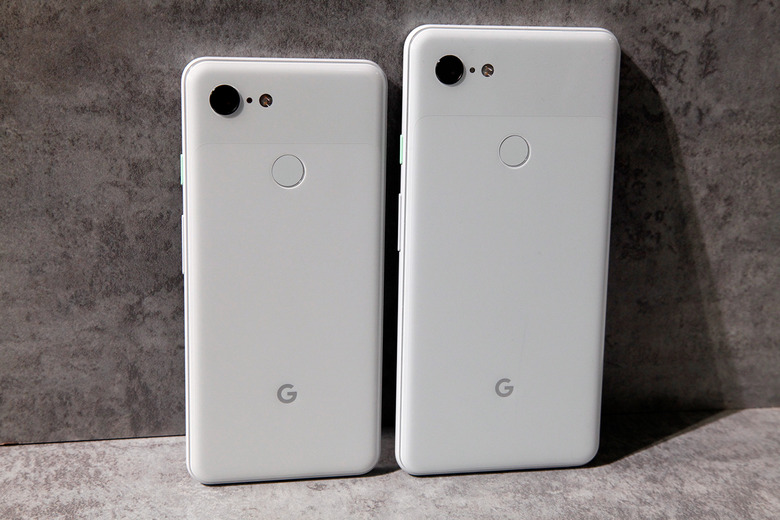Google Thinks A Second Lens Is 'Unnecessary' For The Pixel 3's Main Camera
Google earlier this week unveiled the Pixel 3 phones, confirming practically all the leaks we've seen over the past few months. Those leaks also revealed that the Pixel 3 and Pixel 3 XL would feature a single camera on the back and two on the front, and exposed Google's new artificial intelligence (AI) and machine learning (ML) camera tricks before Google's announcement.
We wondered why Google wouldn't add a second lens to the main camera well before the event, especially considering that the main Pixel rivals feature dual- and triple-lens cameras — in fact, Samsung just unveiled a phone with four cameras. It turns out that Google thinks a second lens is "unnecessary" at this time.
Talking to Wired about the camera, Google's vice president of product management Mario Queiroz said that Google doesn't need a second lens. "We found it was unnecessary," he said, arguing that the company's ML technology is enough to make up for a secondary camera.
Why is there a dual camera on the front? As Google explained during the event, its sole purpose is to let people capture wide-angle selfies without the help of a selfie stick.
Manufacturing cost may also be related to decisions regarding the Pixel 3's camera tech, although that's probably not something Google would admit. The 12.2-megapixel rear camera has a newer generation sensor, but it does have a lot of the same features as the previous generation, according to Google product manager Isaac Reynolds.
Other new camera tricks include a flicker sensor to prevent flickers effects under certain indoor lightning and a new Visual Core chip; Google's proprietary AI photo processor it introduced last year. But Google probably had a single-cam experience in mind for the Pixel 3 years ago, when it started designing the Pixel 3 camera.
"If the phone starts somewhere between 12 to 24 months in advance [of shipping], the camera starts six to eight months before that," Reynolds said. "We've been thinking about the Pixel 3 camera for a long time, certainly more than a year."
The camera on Pixel is the best smartphone camera... EVER, according to DxOMark. #madebygoogle pic.twitter.com/J8Xf2ciaUo
— Google (@Google) October 4, 2016
What's also interesting to note, and isn't featured in the Wired story, is that Google never mentioned a DxOMark rating for the Pixel 3 camera, while it insisted on sharing those scores during previous Pixel launches. Both the Pixel and Pixel 2 obtained the top DxOMark scores when they were launched, with each phone briefly occupying the top position in DxOMark's mobile rankings. And yet, not a peep regarding the Pixel 3.
![]()
It's doubtful for the Pixel 3 to repeat that kind of performance, especially given that Google didn't say anything about DxOMark. Currently, the Huawei P20 Pro is at the top (image above), followed by the iPhone XS Max. You know what these phones have in common? They each have more than one camera on the back. In fact, the Pixel 2 is the only phone in the top 10 above to feature a single-lens main camera.
This doesn't mean the Pixel 3 won't deliver an impressive camera experience, or that DxOMark scores actually matter. But it's an interesting detail nonetheless. If Google used DxOMark reviews to tell us that the Pixel and Pixel 2 were the best mobile cameras in the world, applying the same standards to the Pixel 3 and its single-lens shooter seems only fitting.
You can read more about the Pixel 3's new camera modes over at Wired.
